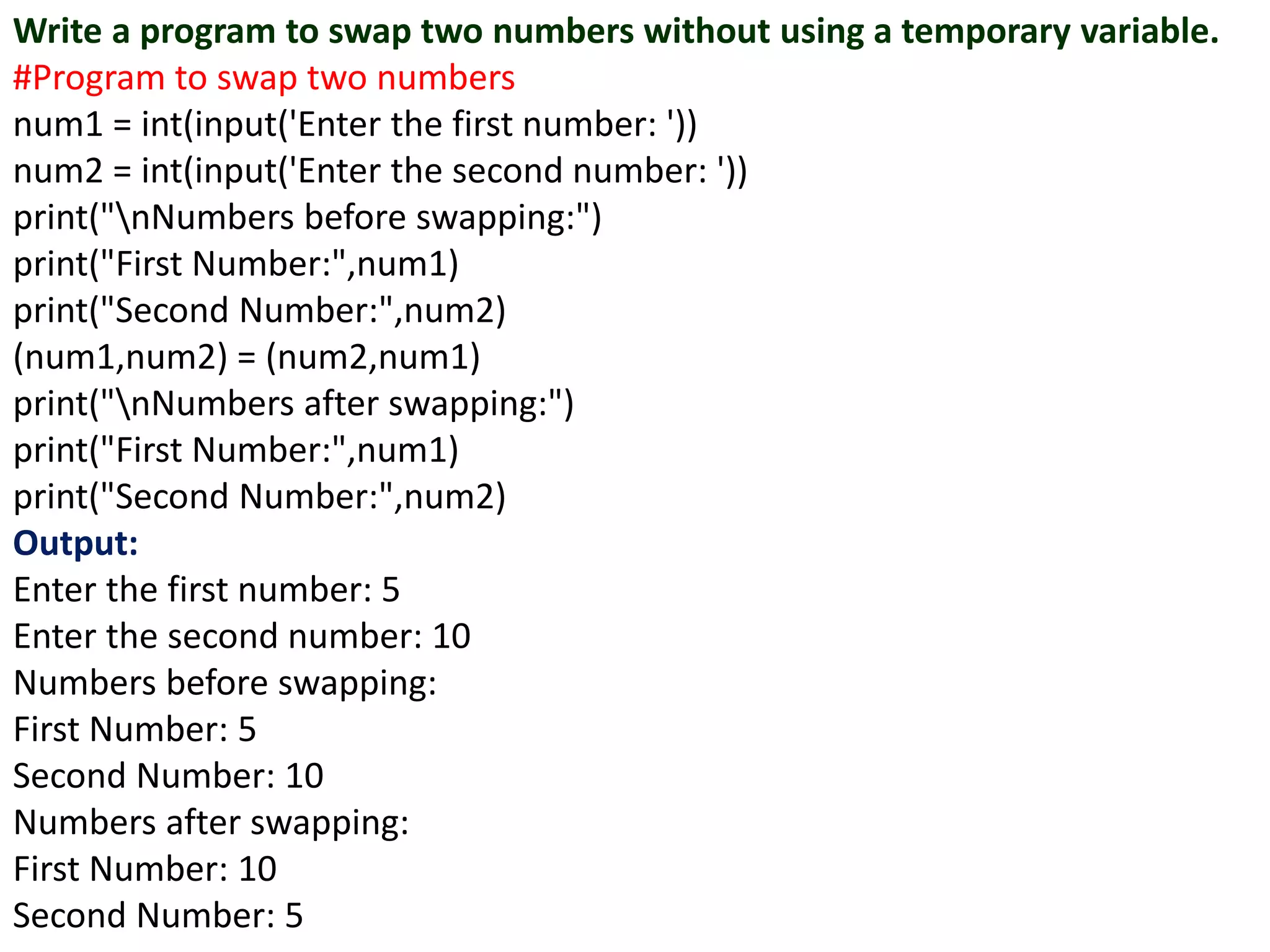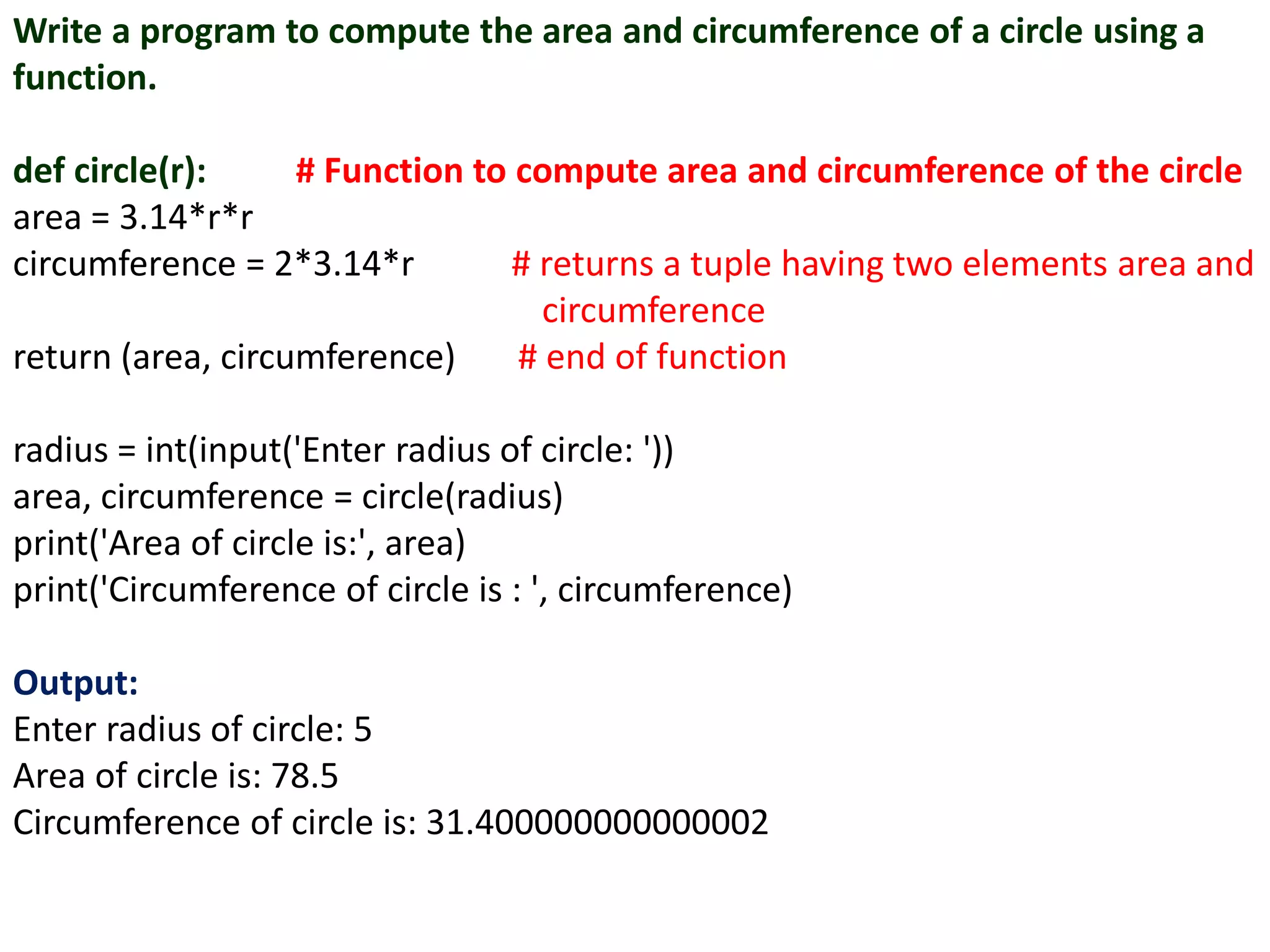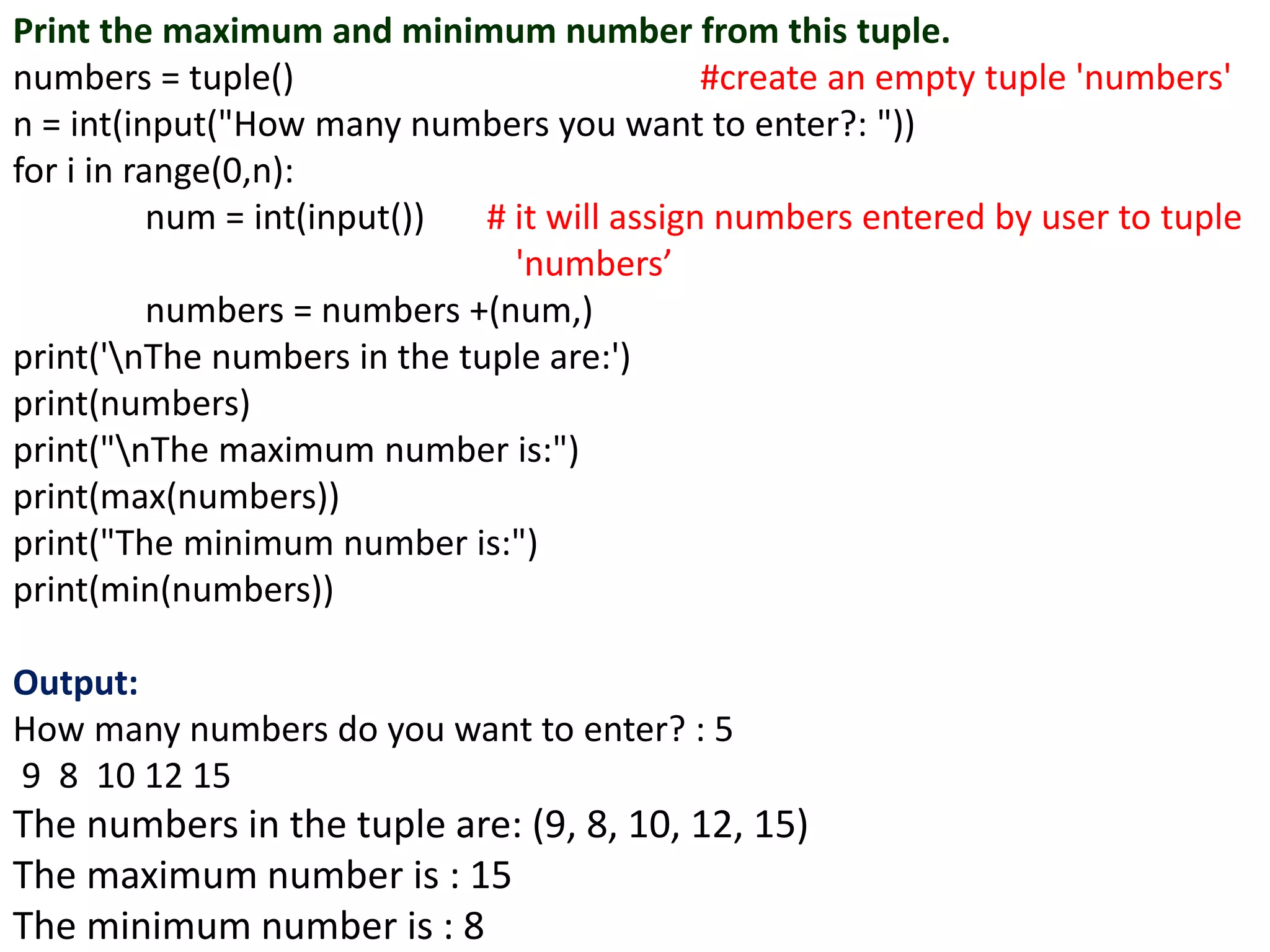This document discusses tuples in Python. Some key points:
- Tuples are ordered sequences of elements that can contain different data types. They are defined using parentheses.
- Elements can be accessed using indexes like lists and strings. Tuples are immutable - elements cannot be changed.
- Common tuple methods include count, index, sorting, finding min, max and sum.
- Nested tuples can store related data like student records with roll number, name and marks.
- Examples demonstrate swapping numbers without a temporary variable, returning multiple values from a function, and finding max/min from a user-input tuple.

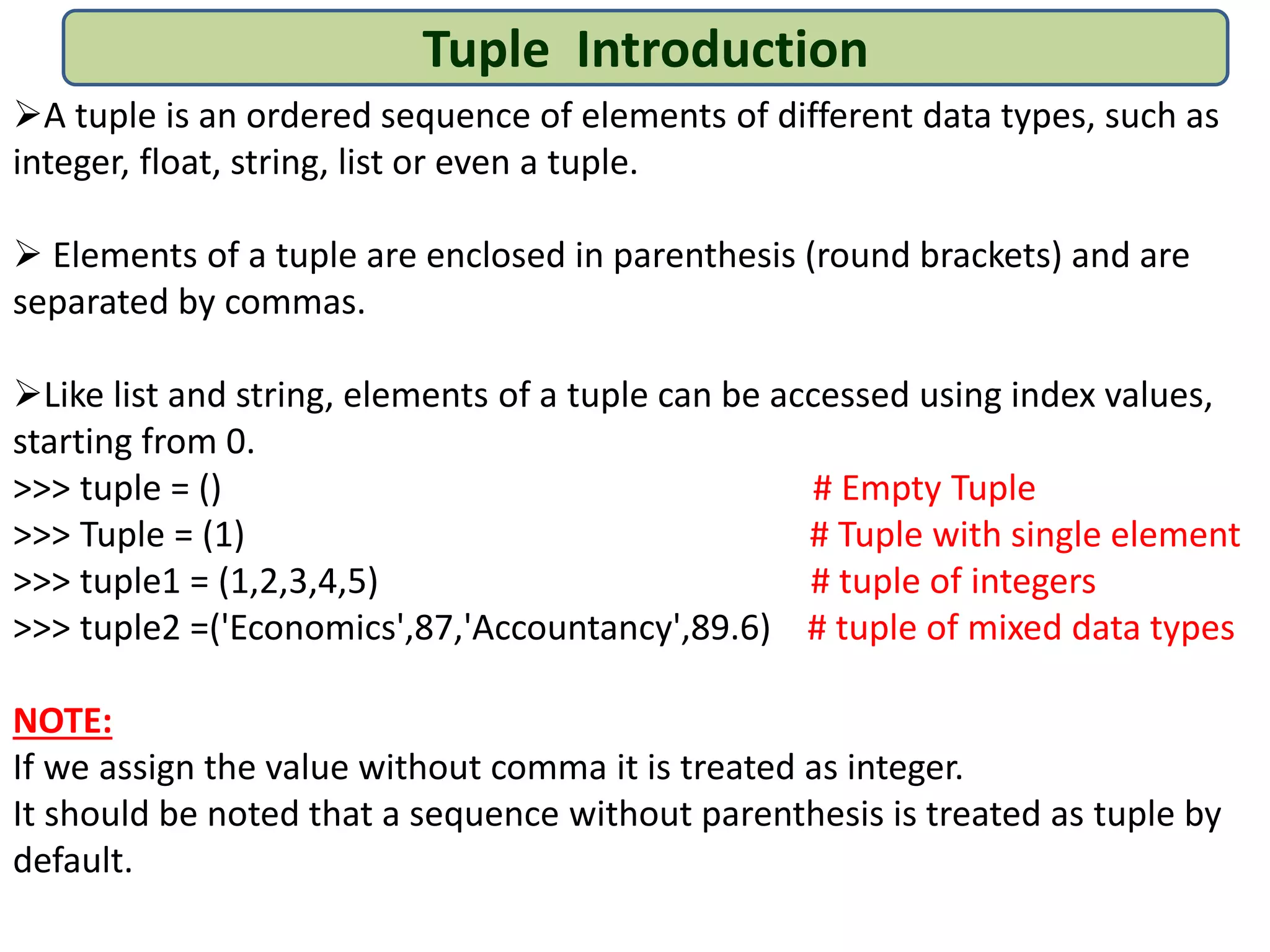
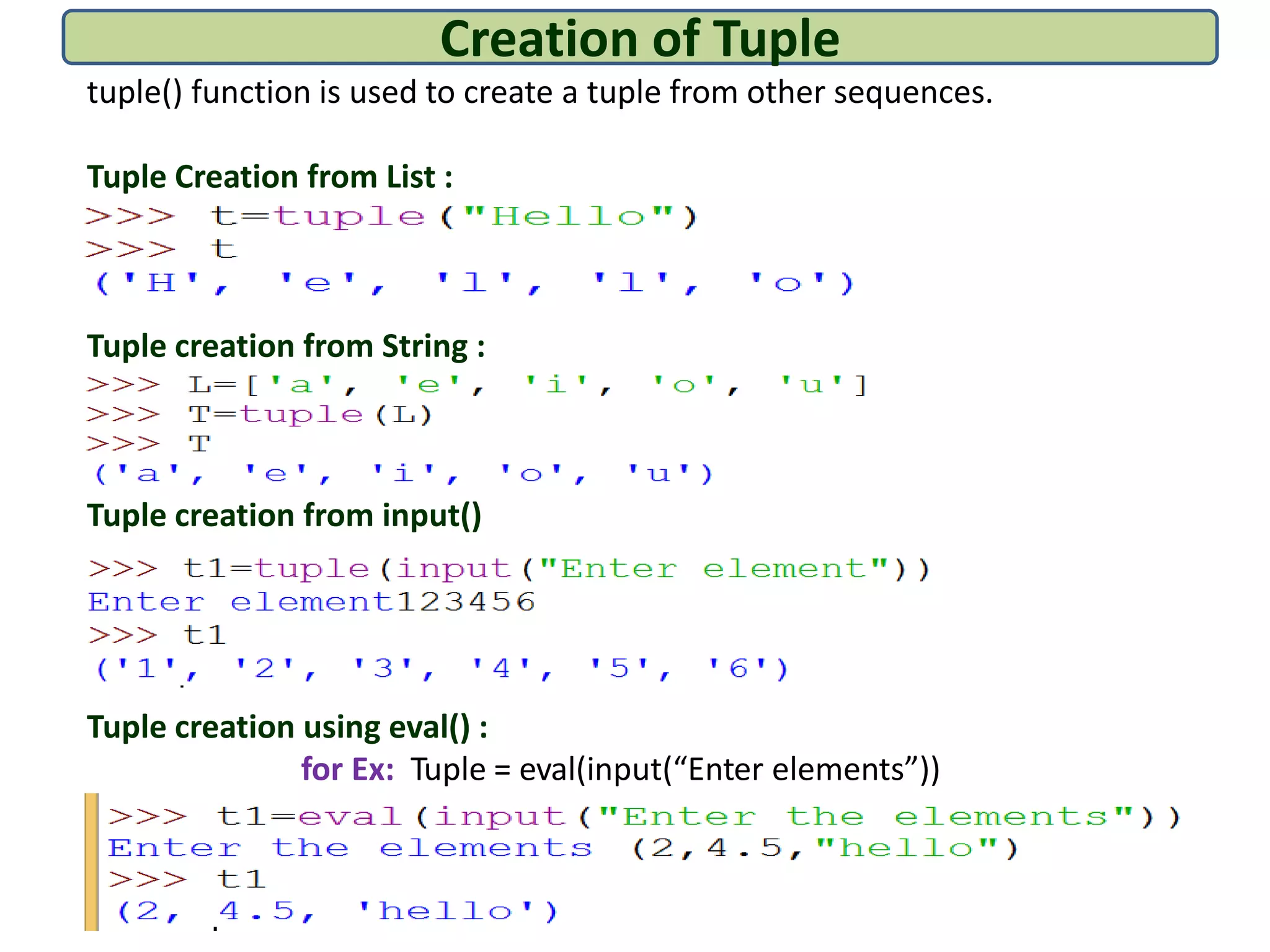
![Elements of a tuple can be accessed in the same way as a list or string using
indexing and slicing.
>>> tuple1 = (2,4,6,8,10,12) # returns the first element of tuple1
>>> tuple1[0] # returns fourth element of tuple1
2
>>> tuple1[3]
8
>>> tuple1[15] # returns error as index is out of range
IndexError: tuple index out of range index
>>> tuple1[1+4] # an expression resulting in an integer
12
>>> tuple1[-1] # returns first element from right
12
NOTE:
Tuple is an immutable data type. It means that the elements of a tuple cannot
be changed
Accessing Elements in a Tuple](https://image.slidesharecdn.com/tuples-220129061136/75/Tuples-in-Python-4-2048.jpg)
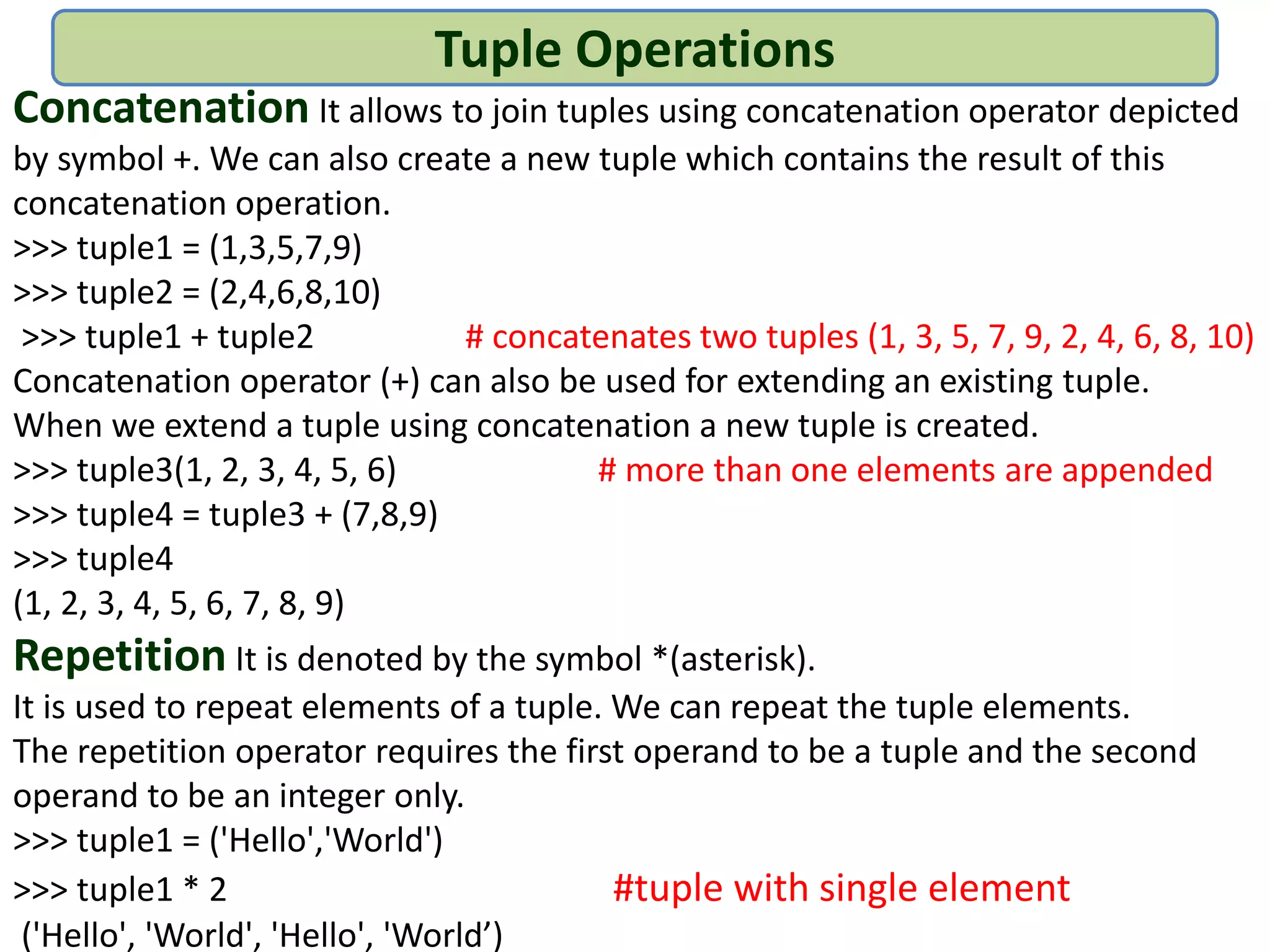
![Membership
The in operator checks if the element is present in the tuple and returns True,
else it returns False.
>>> tuple1 = ('Red','Green','Blue')
>>> 'Green' in tuple1
True
The not in operator returns True if the element is not present in the tuple, else
it returns False.
>>> tuple1 = ('Red','Green','Blue')
>>> 'Green' not in tuple1
False
Slicing
Like string and list, slicing can be applied to tuples also.
>>> tuple1 = (10,20,30,40,50,60,70,80) # tuple1 is a tuple
>>> tuple1[2:7] (30, 40, 50, 60, 70) # elements from index 2 to index 6
>>> tuple1[0:len(tuple1)] # all elements of tuple are printed
(10, 20, 30, 40, 50, 60, 70, 80)
>>> tuple1[:5] (10, 20, 30, 40, 50) # slice starts from zero index
>>> tuple1[2:] (30, 40, 50, 60, 70, 80) # slice is till end of the tuple](https://image.slidesharecdn.com/tuples-220129061136/75/Tuples-in-Python-6-2048.jpg)
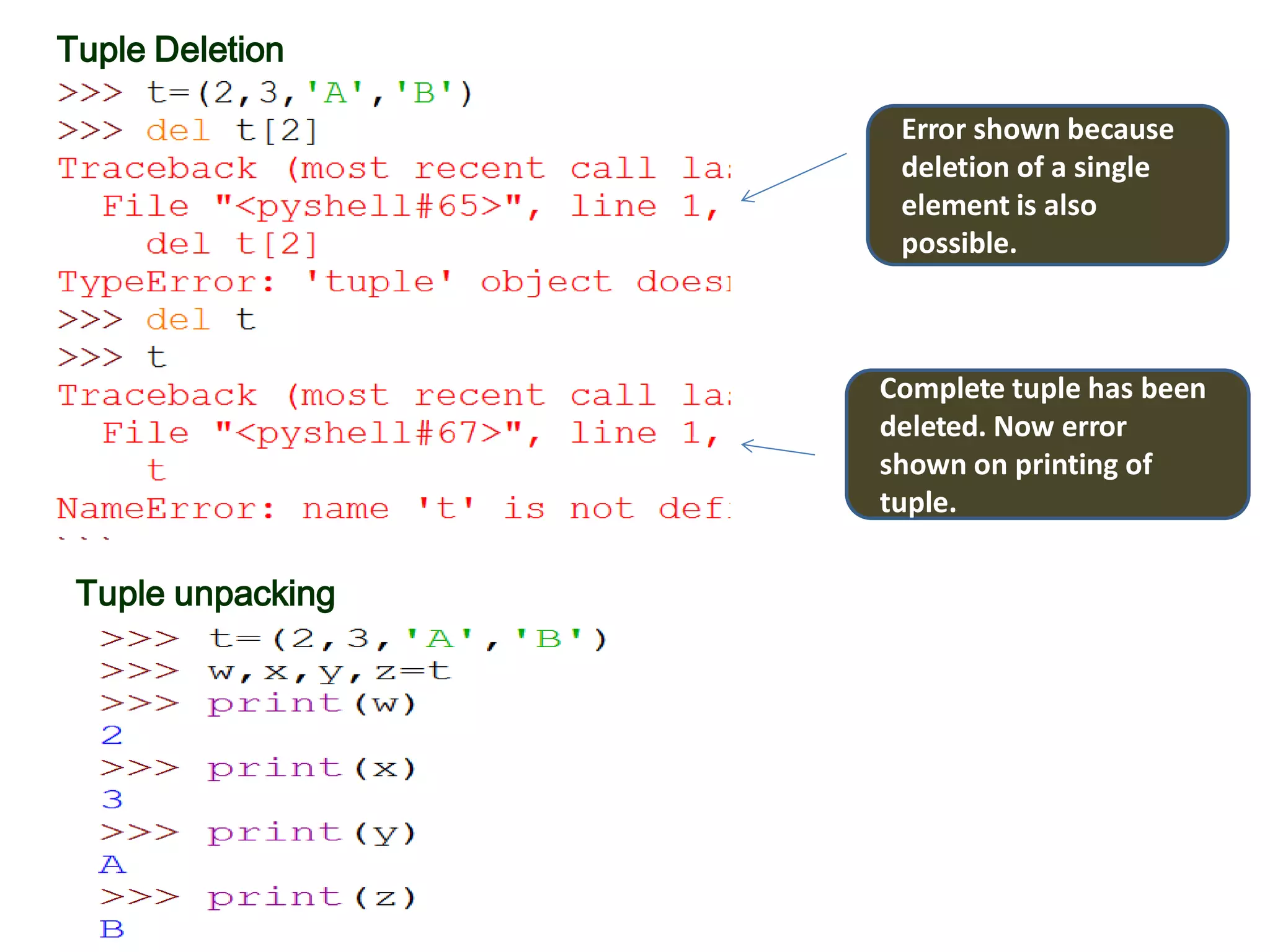
![Method Description Example
len() Returns the length or the number of
elements of the tuple passed as the
argument
>>> tuple1 = (10,20,30,40,50)
>>> len(tuple1)
5
tuple() Creates an empty tuple if no argument
is passed
Creates a tuple if a sequence is passed
as argument
>>> tuple1 = tuple()
>>> tuple1 ( )
>>> tuple1 = tuple('aeiou') #string
>>> tuple1 ('a', 'e', 'i', 'o', 'u')
>>> tuple2 = tuple([1,2,3]) #list
>>> tuple2 (1, 2, 3)
>>> tuple3 = tuple(range(5))
>>> tuple3 (0, 1, 2, 3, 4)
count() Returns the number of times the given
element appears in the tuple
>>> tuple1 = (10,20,30,10,40,10,50)
>>> tuple1.count(10)
3
>>> tuple1.count(90)
0
Tuple Methods and Built-in Functions](https://image.slidesharecdn.com/tuples-220129061136/75/Tuples-in-Python-8-2048.jpg)
![Method Description Example
index() Returns the index of the first occurrence of the
element in the given tuple
>>> tuple1 = (10,20,30,40,50)
>>> tuple1.index(30)
2
>>> tuple1.index(90)
ValueError: tuple.index(x): x not in
tuple
sorted() Takes elements in the tuple and returns a new
sorted list. It should be noted that, sorted()
does not make any change to the original tuple
>>> tuple1 =
("Rama","Heena","Raj",
"Mohsin","Aditya")
>>> sorted(tuple1)
['Aditya', 'Heena', 'Mohsin', 'Raj',
'Rama']
min()
max()
sum()
Returns minimum or smallest element of the
tuple
Returns maximum or largest element of the
tuple
Returns sum of the elements of the tuple
>>> tuple1 = (19,12,56,18,9,87,34)
>>> min(tuple1)
9
>>> max(tuple1)
87
>>> sum(tuple1)
235](https://image.slidesharecdn.com/tuples-220129061136/75/Tuples-in-Python-9-2048.jpg)
![A tuple inside another tuple is called a nested tuple.
In the given program, roll number, name and marks (in percentage) of
students are saved in a tuple.
To store details of many such students we can create a nested tuple
#Create a nested tuple to store roll number, name and marks of students
To store records of students in tuple and print them
st=((101,"Aman",98),(102,"Geet",95),(103,"Sahil",87),(104,"Pawan",79))
print("S_No"," Roll_No"," Name"," Marks")
for i in range(0,len(st)):
print((i+1),'t',st[i][0],'t',st[i][1],'t',st[i][2])
Output: S_No Roll_No Name Marks
1 101 Aman 98
2 102 Geet 95
3 103 Sahil 87
4 104 Pawan 79
Nested Tuples](https://image.slidesharecdn.com/tuples-220129061136/75/Tuples-in-Python-10-2048.jpg)
